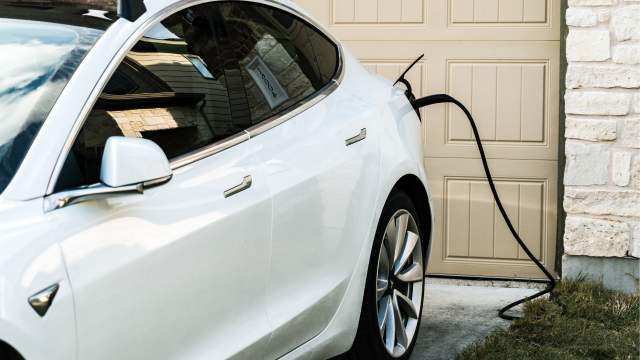Charging your electric vehicle at night time while at home may end up being the worst time and place to do it, a study from Stanford University in the U.S. has found.
Part of the pitch with EVs is that you can charge them from home so that there’s no need to top them up in public. It’s an attractive prospect that, overnight, when the electricity is cheaper, your car can be getting charged up, without having to worry about refuelling it the next day.
But in a study analysing the U.S. grid, researchers at Stanford University have found that it might not always be the best idea to do this: at least not while the grid can’t support it and while EV ownership continues to increase.
“We encourage policymakers to consider utility rates that encourage day charging and incentivise investment in charging infrastructure to shift drivers from home to work for charging,” said Ram Rajagopal, the study’s co-author and an associate professor of civil and environmental engineering at Stanford.
In studying the grid of the western U.S. states, researchers analysed the pressure applied to power networks and applied it to a model of growing EV ownership by 2035. For context, California is banning the sale of petrol engine vehicles from 2035. California also has the highest EV ownership numbers of all U.S. states.
Earlier this month, it was widely reported that California’s grid may be at risk due to high EV uptake and demand on the grid. While this isn’t exactly the case, the research from Stanford found that a grid unwilling to be built out around future EV models may not be up to the task.
The researchers found that rapid electric vehicle growth could increase peak demand by up to 25 per cent, assuming residential night time charging continues to be the most common form of EV charging.
To help alleviate the stress on the grid, the researchers argue that electric vehicle owners move towards public charging or charging at work, additionally arguing that it would help combat greenhouse gas emissions.
“We considered the entire Western U.S. region, because California depends heavily on electricity imports from the other Western states. EV charging plus all other electricity uses have consequences for the whole Western region given the interconnected nature of our electric grid,” said Siobhan Powell, the lead author of the study.
“We were able to show that with less home charging and more daytime charging, the Western U.S. would need less genera1ting capacity and storage, and it would not waste as much solar and wind power.”
California is an interesting case study on electrification and it’s one Australia can learn from, especially as EV uptake continues. As the study explains, California has excess energy during the late mornings and early afternoons, mostly thanks to its solar capacity. If EVs were being charged during these periods, then the energy would be wasted less and would be cheaper.
Additionally, the study warns that grids could become unstable if night charging goes on without proper support and infrastructure lead time. Ines Azevedo, another co-author of the paper and an associate professor of energy science and engineering at Stanford, added:
“The findings from this paper have two profound implications: the first is that the price signals are not aligned with what would be best for the grid – and for ratepayers. The second is that it calls for considering investments in a charging infrastructure for where people work.”
“We need to move quickly toward decarbonising the transportation sector, which accounts for the bulk of emissions in California. This work provides insight on how to get there. Let’s ensure that we pursue policies and investment strategies that allow us to do so in a way that is sustainable.”
The paper was published in Nature Energy.
